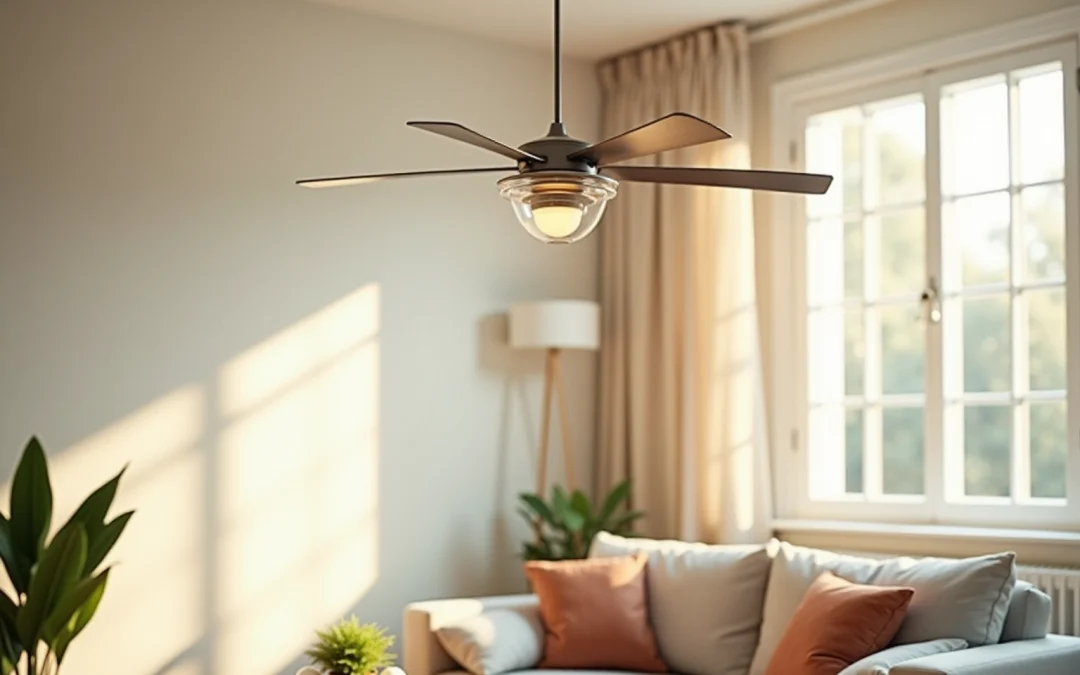Overview
The article presents nine essential low wattage fan options that promote energy efficiency, showcasing products that significantly reduce power consumption while providing effective cooling solutions.
By detailing various brands and technologies, such as ENERGY STAR certified fans and advanced fan control systems, it underscores the growing consumer preference for energy-efficient appliances.
This preference not only highlights the importance of sustainability but also emphasizes the associated cost savings on utility bills, further encouraging informed purchasing decisions.
Introduction
The increasing focus on energy efficiency has fundamentally changed consumer approaches to cooling solutions, with low wattage fans becoming a preferred option. These devices not only promise to lower electricity bills but also play a crucial role in fostering a sustainable environment. Yet, with an overwhelming array of choices available, how can consumers effectively navigate this landscape to identify the most efficient and cost-effective fans? This article explores nine essential low wattage fan options, emphasizing their benefits, innovative technologies, and expert recommendations, ultimately guiding readers toward informed decisions that align with their energy-saving objectives.
Gagner-Toomey Associates: Expert Solutions for Low Wattage Cooling Fans
Gagner-Toomey Associates stands at the forefront of advanced solutions for low wattage fan devices, with a strong emphasis on energy conservation and performance. Their profound empowers engineers to discover optimal solutions tailored precisely to their unique requirements. By representing a diverse portfolio of manufacturers, Gagner-Toomey not only facilitates the development of products that comply with industry standards but also plays a pivotal role in advancing sustainability efforts within the electronics sector.
EcoFlow: Energy-Efficient Fan Solutions for Budget-Conscious Consumers
EcoFlow presents an impressive array of energy-efficient devices tailored for budget-conscious consumers. Their products leverage cutting-edge technology to provide effective cooling solutions with a low wattage fan while achieving low power consumption.
For instance, EcoFlow’s portable ventilators are ideal for outdoor activities, delivering both convenience and efficiency without incurring high costs. These devices, such as a low wattage fan, cater to individuals striving to maintain comfort without inflating their utility bills.
According to the U.S. Department of Energy, initiatives promoting power-saving appliances have led to a 30% increase in consumer preference for energy-efficient overhead units. This trend underscores a broader movement within consumer electronics, where low wattage fans are increasingly prioritized for their .
Furthermore, the segment for low wattage fans, including energy-efficient overhead ventilators, is projected to grow at a CAGR of 7.0%, indicating robust market demand for economical cooling solutions.

ENERGY STAR Certified Ceiling Fans: High Efficiency for Low Energy Use
ENERGY STAR certified ceiling devices stand out due to their exceptional efficiency, utilizing up to 44% less power than traditional models. These devices feature advanced motors and blade designs that optimize airflow, significantly reducing energy consumption. By opting for ENERGY STAR certified appliances, consumers can experience substantial savings on their electricity bills—potentially decreasing expenses by up to 3% for each degree the thermostat is adjusted. This not only benefits individual households but also fosters a more . The ENERGY STAR label serves as a trusted benchmark for quality and performance, ensuring that consumers make informed choices that align with their energy-saving goals. Practical examples demonstrate that companies implementing these fans can enhance comfort while simultaneously lowering utility costs, underscoring the dual benefits of efficiency and ecological responsibility.
For optimal performance, it is advisable to select fan blade sizes based on room dimensions:
- 29 to 36 inches for rooms under 75 square feet
- 36 to 44 inches for 76 to 144 square feet
- 44 to 54 inches for 144 to 225 square feet
- 50 to 72 inches for 225 to 400 square feet
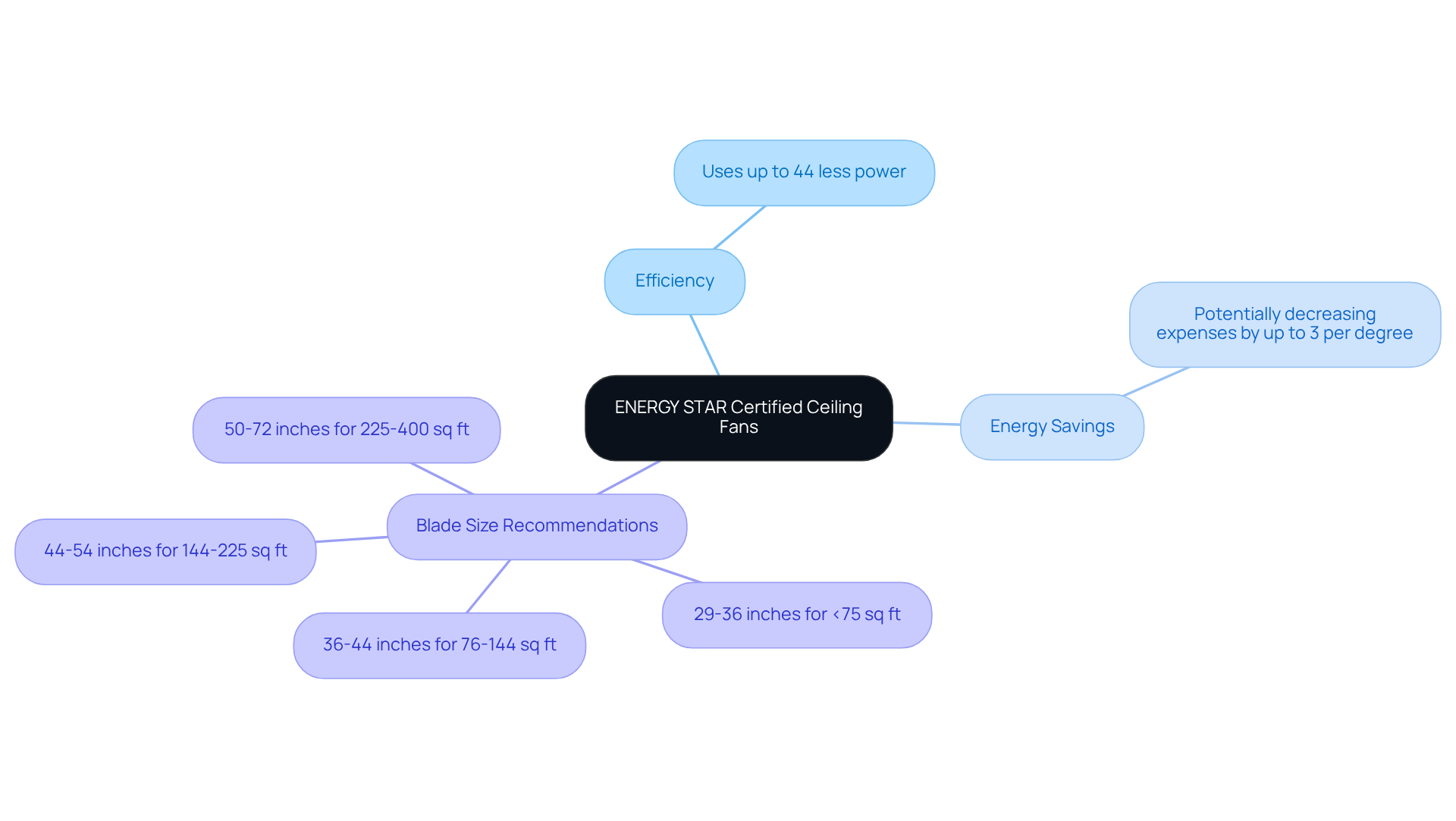
Analog Devices: Smart Fan Control for Energy Savings
Analog Devices offers advanced fan control solutions designed to enhance energy savings through intelligent speed regulation. These sophisticated fan controllers adjust the fan speed based on real-time temperature and airflow data, ensuring effective power utilization. By leveraging these technologies, users can achieve significant reductions in power consumption while maintaining optimal cooling performance. This innovation proves particularly advantageous in applications where is critical.

Enervex: Innovative Ventilation Fans for Low Wattage Performance
Enervex stands at the forefront of cutting-edge ventilation solutions, offering ENERGY STAR certified units that not only excel in performance but also ensure minimal power usage. These devices are engineered with advanced motor technologies and aerodynamic structures, enabling them to achieve remarkable airflow rates without the burden of high power consumption. This efficiency proves particularly beneficial in both residential and commercial applications, where is essential without escalating operational expenses.
Local authorities have noted that low wattage fan devices, such as those from Enervex, not only meet but frequently exceed conventional performance benchmarks, establishing them as a preferred choice for energy-conscious consumers. Practical applications of Enervex units have demonstrated significant resource savings, with certain models consuming up to 48% less power than traditional alternatives. Furthermore, ENERGY STAR certified ventilation fans equipped with lighting utilize 70% less power on average compared to standard models, underscoring the advantages of selecting efficient options.
Regular maintenance is vital to ensure optimal performance and power conservation, as dust accumulation can impede airflow and increase power consumption. This commitment to resource conservation positions Enervex as a leader in the market, providing innovative solutions that align with modern sustainability goals.
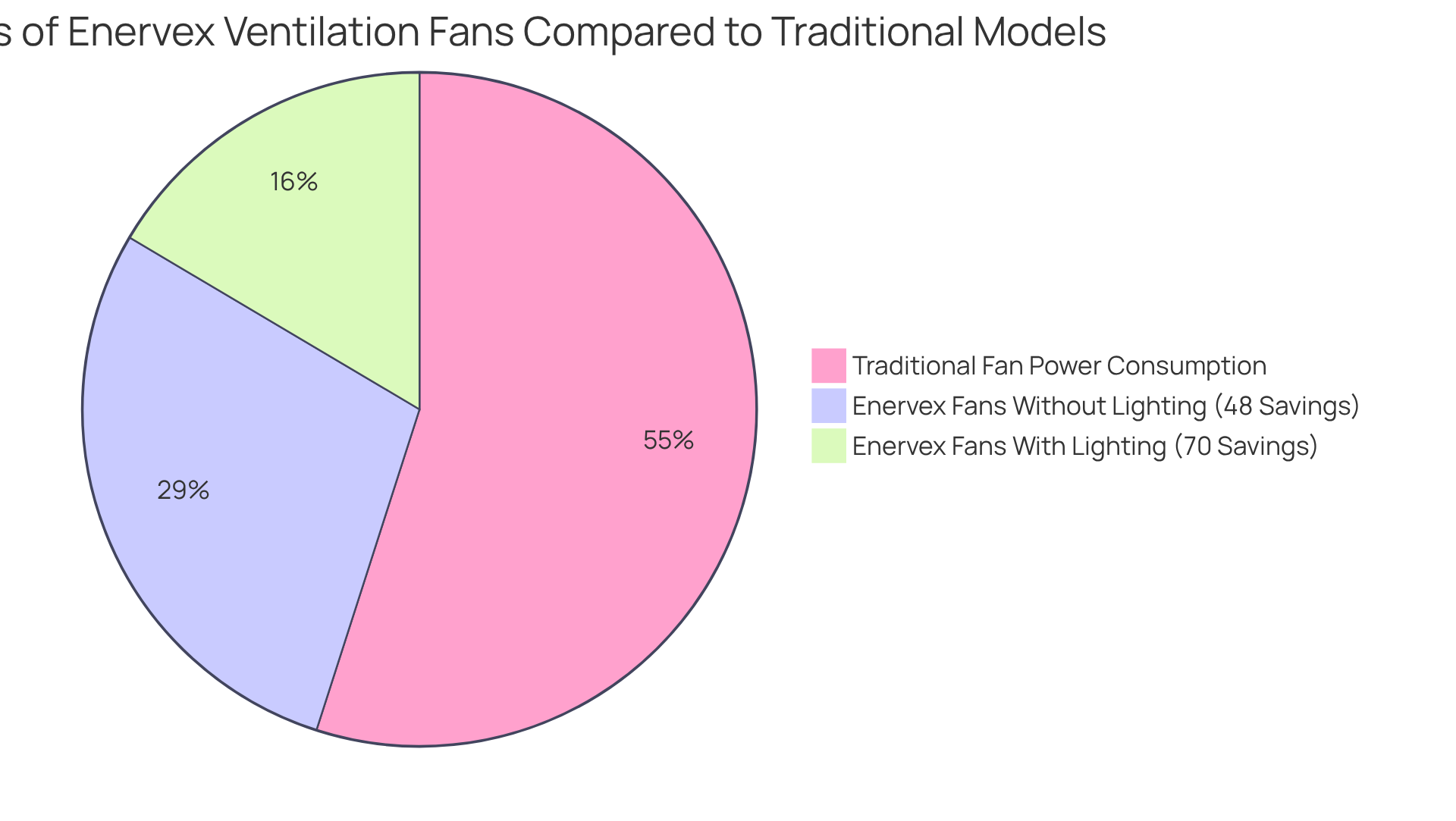
Power Forward with PSO: Tips for Maximizing Fan Efficiency
To optimize airflow performance, it is crucial to consider the following strategies:
- Ensure proper positioning of devices to enhance airflow efficiency. This foundational step can significantly impact overall performance.
- Regularly clean blades to prevent dust accumulation. Maintaining cleanliness is essential for optimal functionality.
- Utilize timers or smart controls to operate devices only when necessary. This approach not only conserves energy but also extends the lifespan of your devices.
- Adjust speed settings based on room temperature. Tailoring the operation to environmental conditions maximizes comfort and efficiency.
- Combine device use with natural ventilation methods. Integrating these approaches can lead to substantial resource savings.
By applying these methods, you can achieve considerable resource savings and enhance comfort in your living spaces.
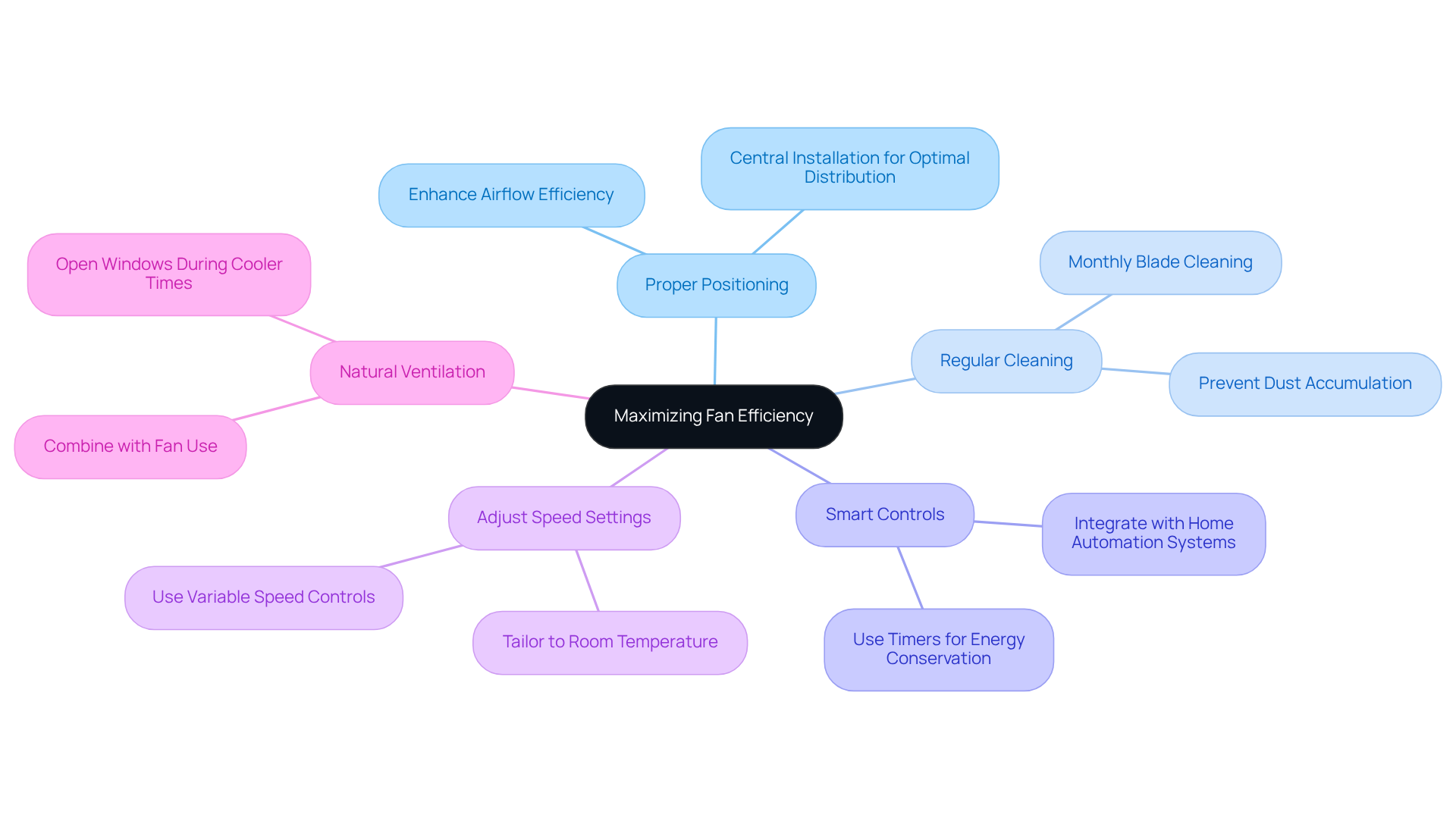
Energy.gov: Guidelines for Choosing and Using Low Wattage Fans
Energy efficiency is paramount when selecting devices that are low wattage fans for home use. Specialists recommend choosing devices that are appropriately sized for your space, as this ensures optimal airflow without unnecessary energy consumption. Fans bearing the ENERGY STAR certification stand out, as they can be up to 60% more efficient than standard models. Understanding a fan’s in relation to its cooling capability is essential; for instance, an overhead fan typically costs about 1 cent per hour to operate, significantly less than air conditioning systems that can run up to 60 cents per hour. In fact, overhead circulators incur costs of less than 20 cents a day when used continuously, positioning them as a cost-effective cooling solution.
Real-world examples underscore the effectiveness of utilizing fans alongside air conditioning. By raising the thermostat setting by just 4°F while operating a ceiling fan, users can save 3-5% on cooling costs while preserving comfort. This approach not only enhances efficiency but also prolongs the lifespan of HVAC systems. Additionally, opting for a low wattage fan with multiple speed settings can contribute to reduced utility expenses. It is advisable to turn off fans when the room is unoccupied, as this can yield further savings on energy consumption. By adhering to these guidelines, one can achieve improved performance and substantial savings on utility bills.
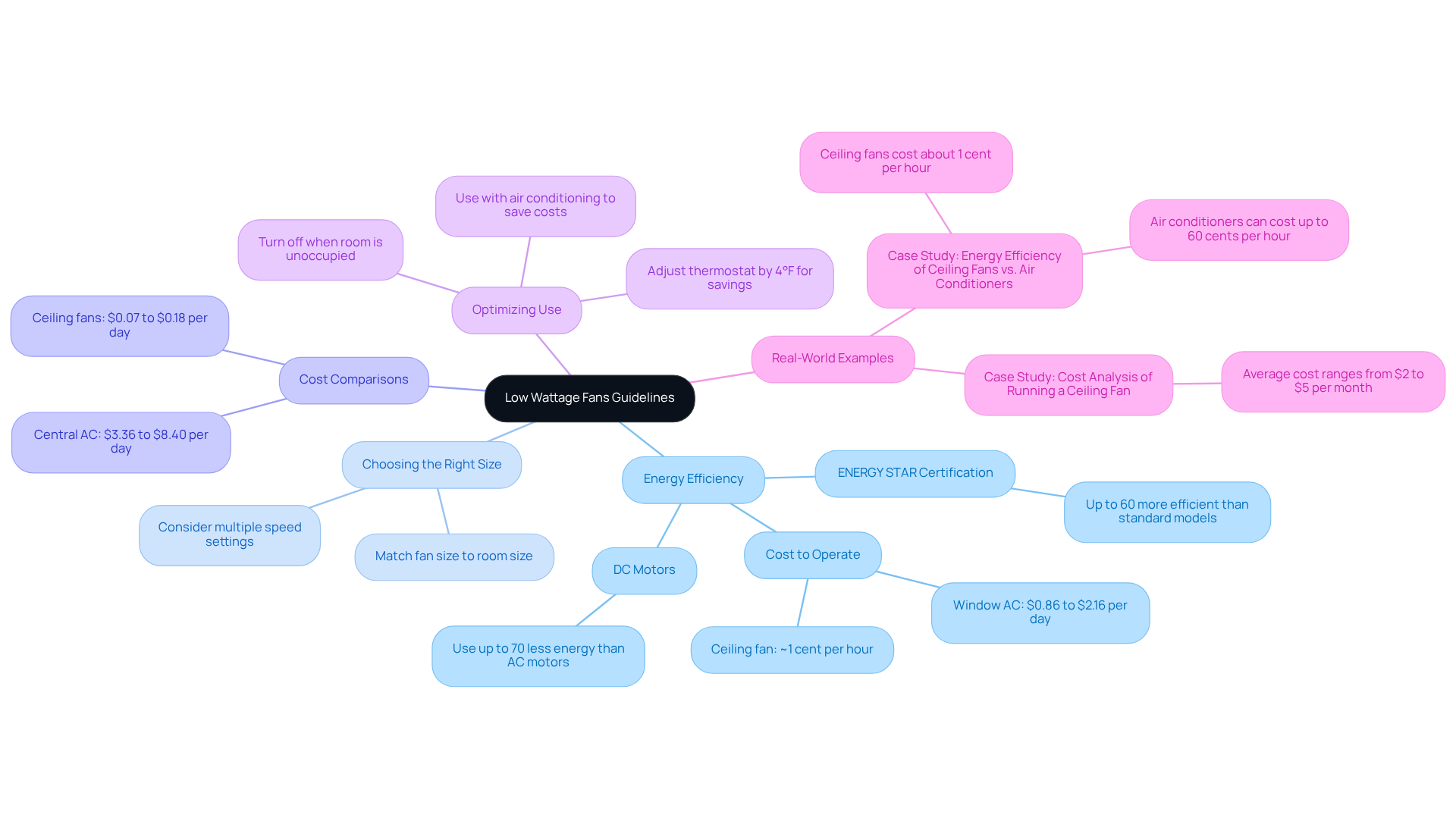
EcoFlow Blog: Understanding Fan Electricity Consumption
The EcoFlow Blog underscores a critical consideration in : while cooling devices necessitate power to operate, their energy usage is markedly lower than that of traditional air conditioning systems. Factors such as fan size, motor type, and speed settings play pivotal roles in determining this consumption.
For example, a low wattage fan generally operates within a range of 10 to 120 watts, depending on its type and speed settings. Smaller models, such as a low wattage fan, can function on as little as 10 watts, whereas larger versions may draw up to 100 watts. In stark contrast, air conditioning units typically consume between 700 to 900 watts per hour, positioning alternative cooling devices as significantly more energy-efficient options.
By grasping these dynamics, consumers are empowered to make informed choices that align with their energy efficiency goals. Furthermore, strategically utilizing fans can yield substantial savings on electricity bills, as they enable higher thermostat settings without compromising comfort.
Energy specialists indicate that operating a low wattage fan for 8 hours of daily use costs approximately $1.68 per month, which is considerably lower than the $17 to $40 monthly expense associated with window air conditioners. Additionally, running a low wattage fan like a 75W ceiling fan for 8 hours daily incurs a cost of about $2.88, emphasizing the importance of selecting the appropriate fan size and type to optimize energy use and minimize overall cooling expenses.
Incorporating ENERGY STAR® certified models can further enhance motor performance and electricity savings, making them a prudent choice for consumers.
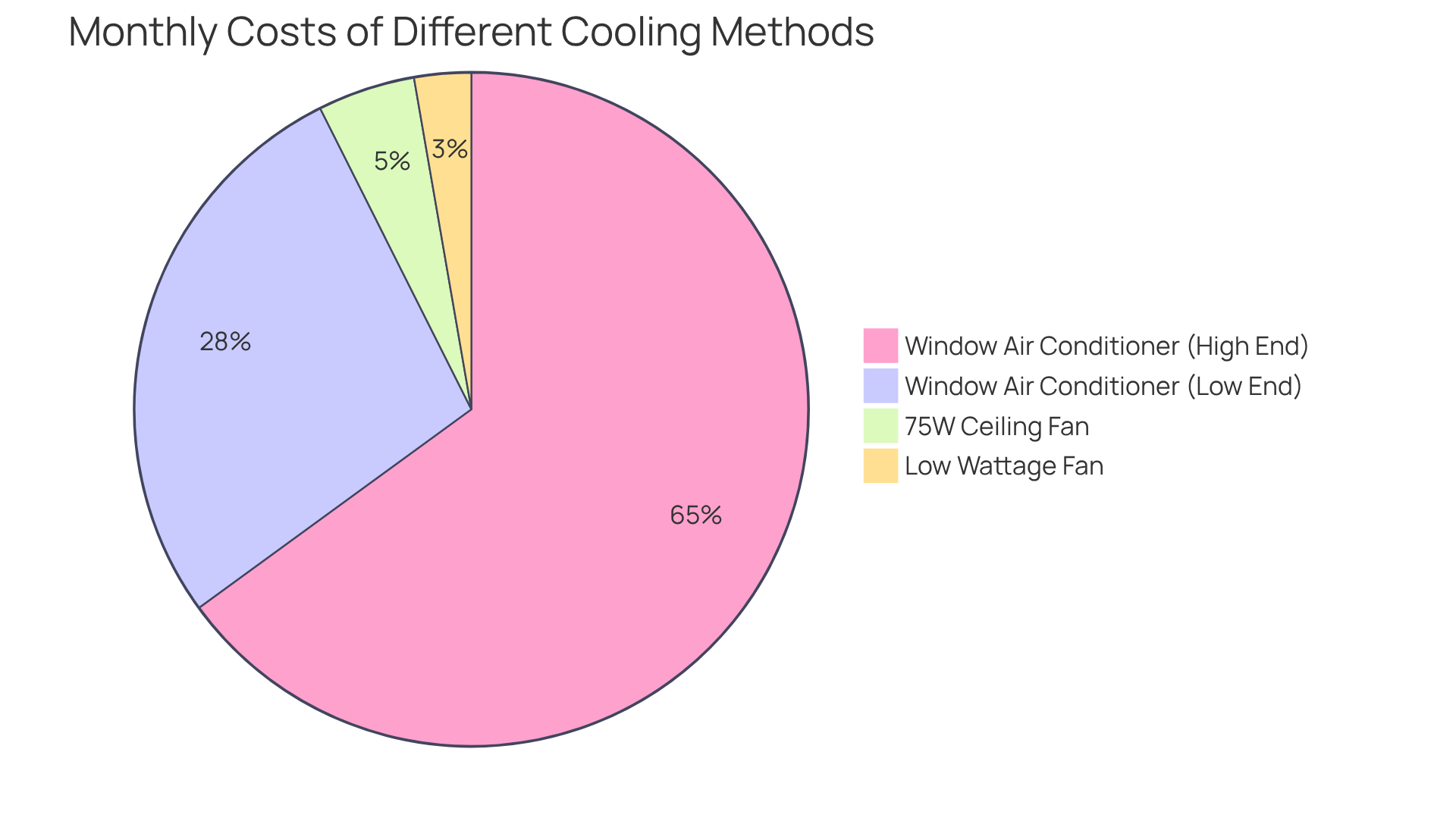
Enervex Insights: Utilizing the Fan Energy Index for Efficient Choices
The Fan Energy Index (FEI) is a pivotal metric for evaluating fan efficiency, established by the Air Movement and Control Association (AMCA). This enables a direct comparison of power usage across different fan models under consistent operating conditions. By selecting models with a higher FEI, consumers can choose products that not only deliver enhanced performance but also significantly reduce power consumption.
An FEI value of 1.0 indicates that a fan is as efficient as the theoretical reference fan, providing a baseline for understanding the significance of higher FEI values. For instance, a fan with an FEI of 2.00 can utilize approximately 25% less power than a similar model with an FEI of 1.50, demonstrating the tangible advantages of prioritizing effectiveness.
Furthermore, new regulations mandate that all commercial and industrial ventilators disclose their FEI ratings starting October 31, 2023. This requirement will grant consumers access to precise performance data, empowering them to make decisions aligned with energy conservation objectives.
The FEI not only enhances purchasing decisions but also incentivizes manufacturers to innovate and produce higher-quality, energy-efficient devices, ultimately contributing to a more sustainable future. As AMCA International states, “Unlike earlier performance assessments, FEI considers all components of the fan system including the motor, drive, transmission (gears or belts), and aerodynamic losses.”
Additionally, factors such as airflow rate and pressure increase are crucial in assessing fan performance, further underscoring the importance of the FEI in making informed decisions.
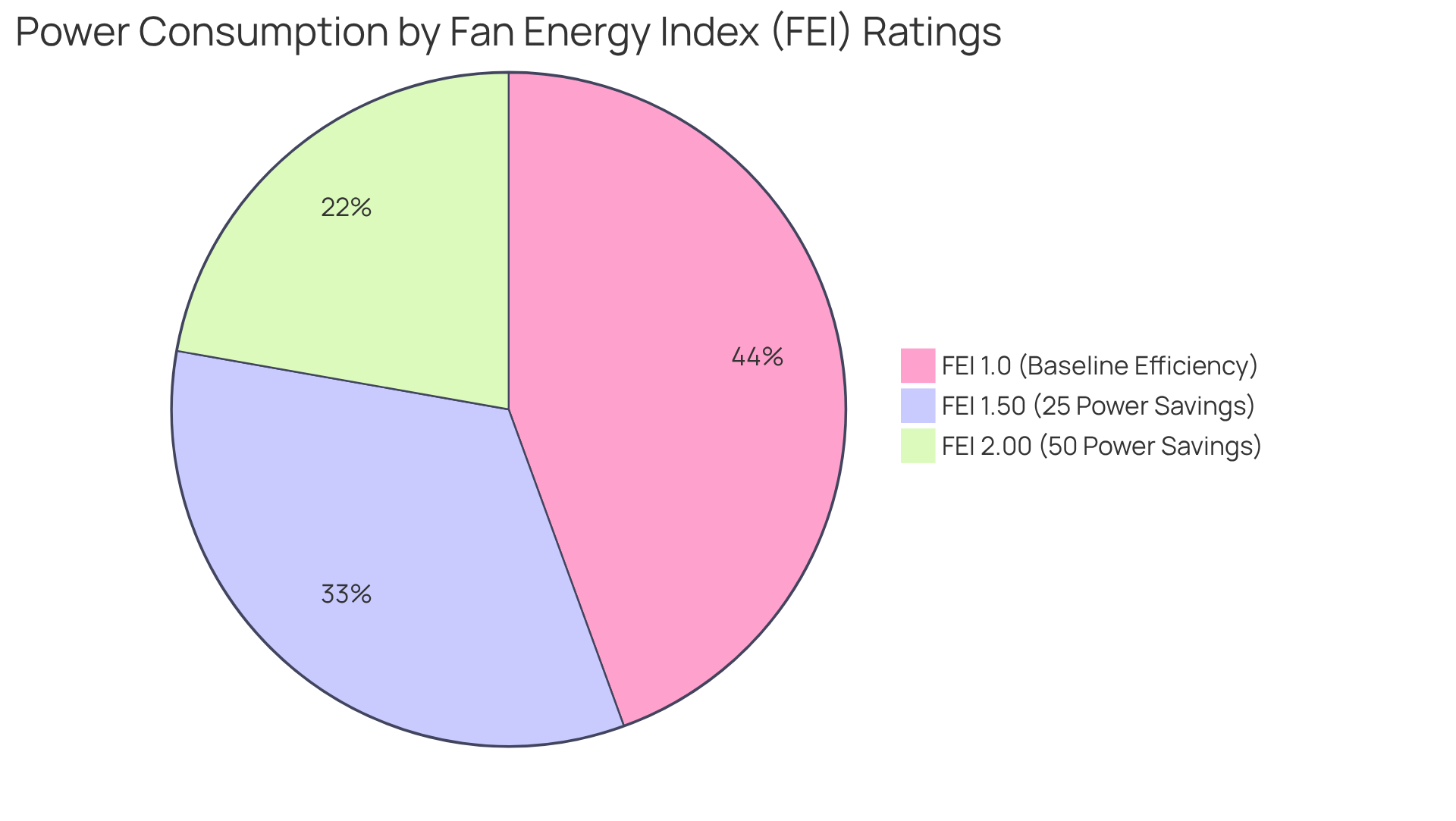
Energy.gov: Recommended Low Wattage Ceiling Fans for Effective Cooling
Energy.gov showcases multiple low wattage fan ceiling units that excel in efficiency and performance in 2025. Notably, the Hunter Fan Company’s ENERGY STAR certified models stand out due to their advanced motor technology, which delivers remarkable airflow while consuming significantly less power. This makes them an .
Additionally, Minka-Aire products are recognized for their stylish designs and effective performance, appealing to those who prioritize aesthetics alongside functionality. By selecting these recommended models, consumers can achieve effective cooling with a low wattage fan while minimizing energy costs, as some units operate on as little as 15 watts at low settings.
Remarkably, overhead ventilators incur a monthly cost of approximately $1.68 when used for 8 hours daily, which is considerably lower than traditional air conditioning systems. The wind chill effect generated by these overhead devices enhances comfort, allowing occupants to feel cooler without necessitating a reduction in room temperature.
For optimal performance, correct installation height is crucial; ventilators should be positioned at least 8 inches from the ceiling and 18 inches from the walls. The typical CFM per watt for these overhead units is 287.8, underscoring the effectiveness of these designs.
As emphasized by industry specialists, utilizing ENERGY STAR certified appliances not only reduces power consumption but also contributes to a more sustainable environment. To conserve energy, it is advisable to turn off ceiling fans when they are not in use and consider using them in conjunction with air conditioning to optimize cooling and reduce costs.
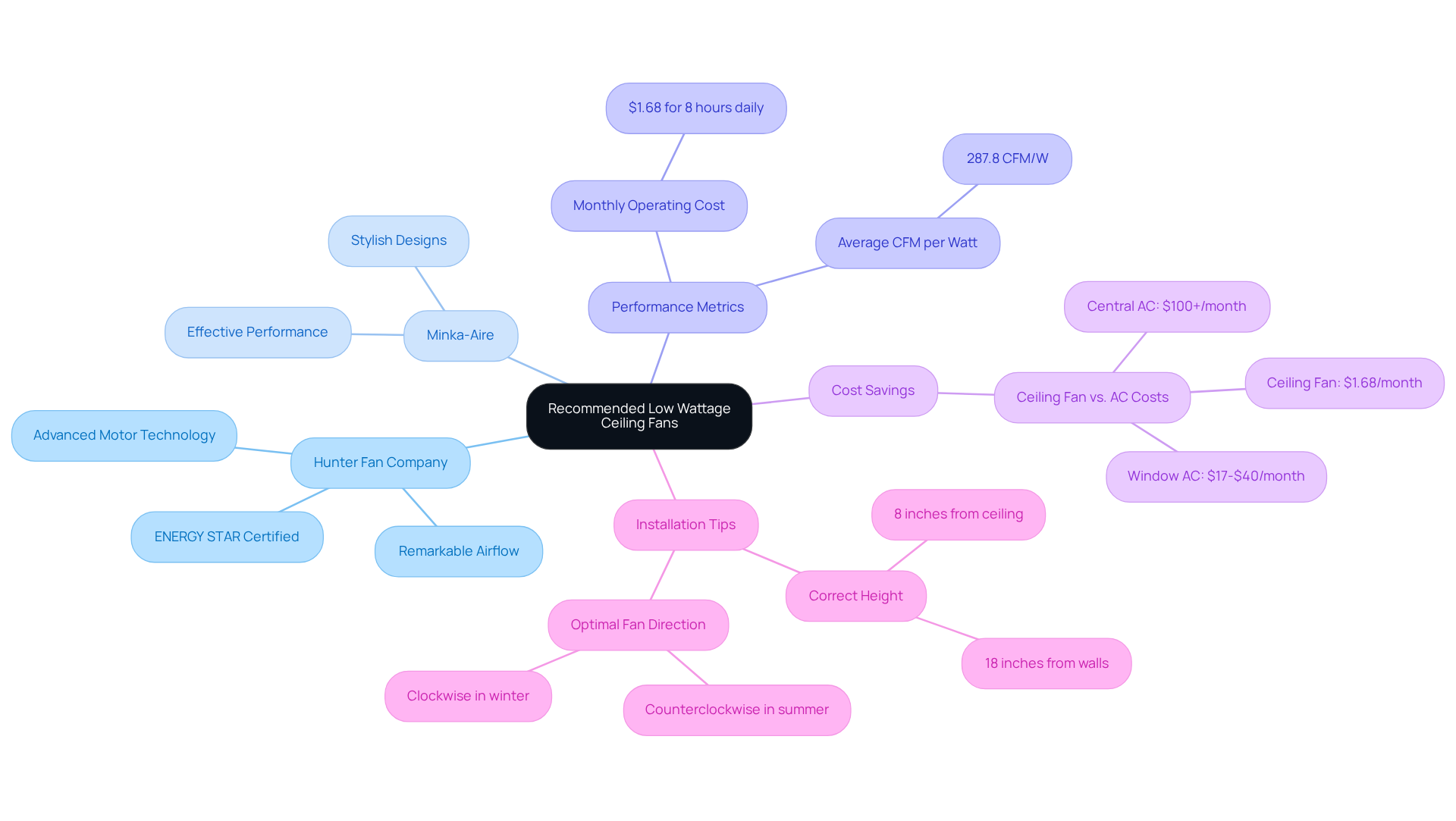
Conclusion
Emphasizing energy efficiency in cooling solutions is paramount, and the exploration of low wattage fans unveils a multitude of options that deliver both performance and sustainability. These fans not only provide effective cooling but also significantly reduce energy consumption, making them a prudent choice for environmentally conscious consumers aiming to decrease their utility bills.
Key insights from the discussion underscore the benefits of choosing ENERGY STAR certified fans, which consume up to 44% less power than traditional models. Furthermore, advancements in smart fan control technologies facilitate precise adjustments based on real-time conditions, amplifying energy savings. Recommendations from reputable sources, such as Energy.gov and Gagner-Toomey Associates, offer a roadmap for consumers to make informed decisions that align with their energy-saving objectives.
Ultimately, adopting low wattage fan solutions represents a stride toward a more sustainable lifestyle. By prioritizing energy-efficient models and implementing best practices for their usage, individuals can contribute to environmental conservation while enjoying the comfort of effective cooling. The future of cooling technology resides in these innovative solutions, urging consumers to take action and make choices that benefit both their homes and the planet.
Frequently Asked Questions
What is Gagner-Toomey Associates known for?
Gagner-Toomey Associates specializes in advanced solutions for low wattage fan devices, focusing on energy conservation and performance while helping engineers find optimal cooling solutions.
How does Gagner-Toomey Associates contribute to sustainability?
By representing a diverse portfolio of manufacturers, Gagner-Toomey Associates helps develop products that meet industry standards and advance sustainability efforts within the electronics sector.
What types of products does EcoFlow offer?
EcoFlow offers a range of energy-efficient devices, including low wattage fans and portable ventilators designed for budget-conscious consumers, providing effective cooling with low power consumption.
What is the trend in consumer preference regarding energy-efficient appliances?
There has been a 30% increase in consumer preference for energy-efficient overhead units, highlighting a shift towards low wattage fans for their cost-effectiveness and power conservation.
What is the projected market growth for low wattage fans?
The market for low wattage fans, including energy-efficient overhead ventilators, is projected to grow at a compound annual growth rate (CAGR) of 7.0%.
What are the benefits of ENERGY STAR certified ceiling fans?
ENERGY STAR certified ceiling fans use up to 44% less power than traditional models, offering significant energy savings and helping to lower electricity bills while promoting a sustainable environment.
How can consumers maximize the efficiency of ceiling fans?
To optimize performance, consumers should select fan blade sizes based on room dimensions: – 29 to 36 inches for rooms under 75 square feet – 36 to 44 inches for 76 to 144 square feet – 44 to 54 inches for 144 to 225 square feet – 50 to 72 inches for 225 to 400 square feet.

